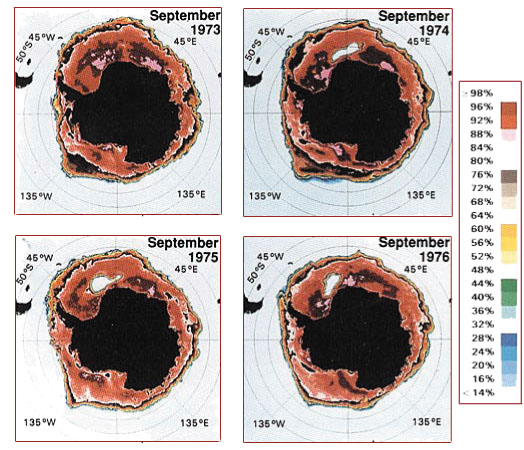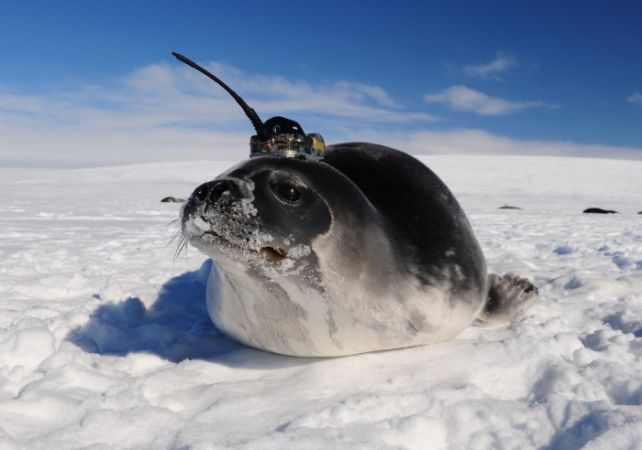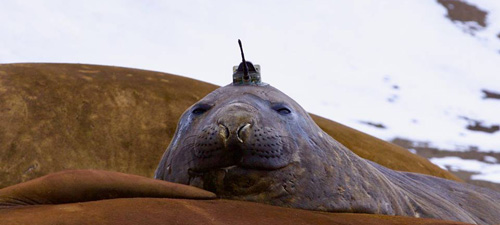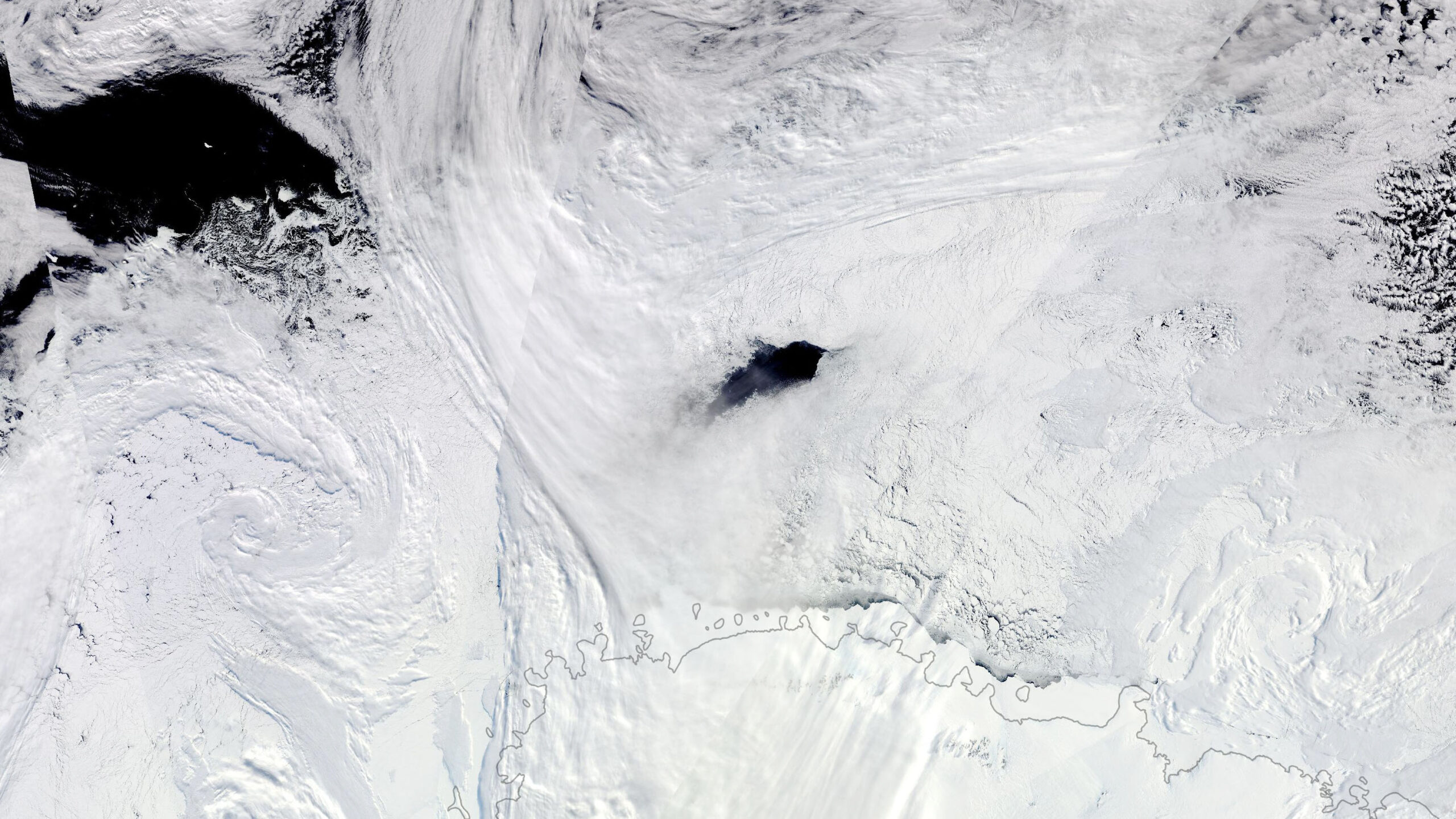Every now and then for the last 50 years, an enormous hole opens up in the Antarctic sea ice. And by enormous, we mean truly enormous — the feature in question was twice the size of Wales last time it appeared in 2016 and 2017. But despite its gigantic nature, scientists have long been stumped regarding how, exactly, the thing forms.
The phenomenon, known as the Maud Rise polynya, occurs over the Antarctic winter and was first observed by scientists in 1973. A polynya is just a fancy word for an area of open water surrounded by sea ice. Animals in both the Arctic and Antarctic use them as feeding grounds.
They are fairly common in coastal areas, but far out to sea like the Maud Rise polynya — that’s much rarer. That unique location, combined with the Maud Rise polynya’s gigantic size, have puzzled scientists for over five decades.

Satellite imagery of the Maud Rise polynya from when it was first discovered in the early 70s. Photo: NASA
Now, a team comprising scientists from the University of Southampton, the University of Gothenburg, and the University of California San Diego, thinks it has cracked the puzzle.
The solution? A combination of conditions specific to the Maud Rise polynya’s unique location.
A little help from our friends
In 2016 and 17, a current circulating through the Weddell Sea, where the polynya formed, gained strength. That led to an updraft of warm, salty water.
“This upwelling helps to explain how the sea ice might melt. But as sea ice melts, this leads to a freshening of the surface water, which should in turn put a stop to the mixing,” Fabien Roquet, a Professor in Physical Oceanography at the University of Gothenburg, noted in a press release. “So, another process must be happening for the polynya to persist. There must be an additional input of salt from somewhere.”
To find the missing link in the chain, the team turned to a combination of remote sensors, computational models, and — this journalist’s all-time favorite data collection method — marine mammals wearing sensor hats.

A seal wearing a sensor hat. Animals like this joined the team in its search for the answers behind the mysterious Maud Rise polynya. Photo: Dan Costa, University of California, Santa Cruz
With help from computers and our blubbery friends with their adorable little chapeaus, the team discovered that a process called “Ekman transport” was moving water into the area at a 90-degree angle to the direction of the wind, providing the additional salt needed.
Missing ingredient found
“Ekman transport was the essential missing ingredient necessary to increase the balance of salt and sustain the mixing of salt and heat towards the surface water,” co-author Professor Alberto Naveira Garabato, University of Southampton, said.
All this is pretty cool until you remember that melting Antarctic ice is not necessarily what the world needs at the moment.
“The imprint of polynyas can remain in the water for multiple years after they’ve formed. They can change how water moves around and how currents carry heat toward the continent,” said Professor Sarah Gille, a co-author of the paper from the University of California San Diego. “The dense waters that form here can spread across the global ocean.”
“For the first time since observations began in the 1970s, there’s a negative trend in sea ice in the Southern Ocean, which began around 2016. Before then it had remained somewhat stable,” she continued.
Since that’s a bit of a downer, we’ll leave you with another photo of an elephant seal wearing a sensor hat. You know. For science.

Photo: C. McMahon, IMOS/U, Sydney





